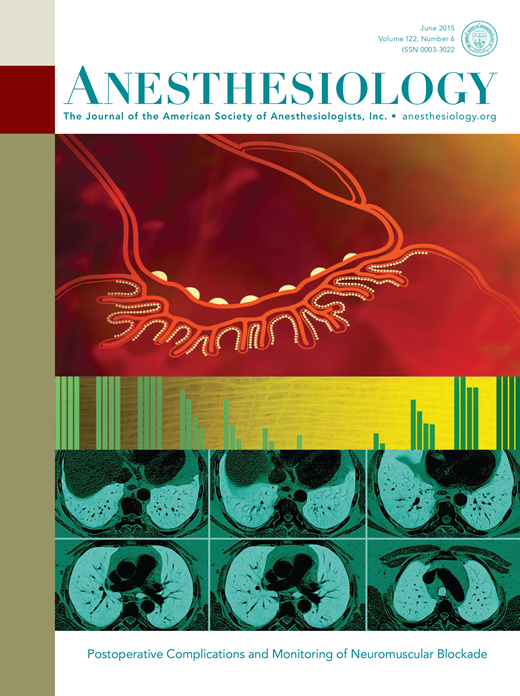美国围手术期人员的头部撞击:一项混合方法研究。
IF 9.1
1区 医学
Q1 ANESTHESIOLOGY
引用次数: 0
摘要
卫生保健工作者面临着主要的职业危害。虽然麻醉师的各种工作场所安全风险已经被记录在案,但头部受伤仍然是一个未被充分认识的危险。本研究旨在确定麻醉医师和围手术期护士头部撞击的频率和特征,检查报告实践,并确定潜在的预防策略。方法于2024年2月和3月向美国麻醉医师和围手术期护士发放了一份包含22个问题的调查问卷。该调查由一个多学科团队开发,包括多项选择和自由回答问题。主要结果测量是患者在过去12个月内是否在手术室或手术室经历过头部撞击。次要结局指标包括头部撞击次数;打击的来源、时间和首要位置;休假:从工作中请假的时间;是否提交安全报告;自由文本回应的影响因素,建议的变化,以减少风险,并在报告伤害的挑战。定性回答由研究者对使用两个共同开发的代码本进行编码,其中包含归纳出现的主题和副主题。结果1549名麻醉医师(反应率6.6%)和287名护士(反应率2.7%)中,1441名(78.5%)在前一年至少发生过一次头部罢工。常见的光源包括监视器(73.4%的受访者)、灯头(37.4%)和吊杆安装设备(33.4%)。大多数(948例,65.8%)事故发生在术中。头部撞击的原因是多因素的,通常是设备放置、临床医生的移动和在时间压力下发生的任务的组合。只有69家(4.8%)在头部撞击后提交了安全报告。报告的障碍包括时间限制、认为罢工是小事件以及担心负面后果。结论头部撞击是围手术期和围手术期常见但未被充分报道的职业危害。为了减少此类风险,需要对设备设计、工作空间组织和报告文化进行多方面的干预。本文章由计算机程序翻译,如有差异,请以英文原文为准。
Head Strikes Among Perioperative Personnel in the United States: A Mixed Methods Study.
BACKGROUND
Healthcare workers face major occupational hazards. While various workplace safety risks for anesthesiologists have been documented, head injuries remain an underrecognized hazard. This study aimed to determine the frequency and characteristics of head strikes among anesthesiologists and perioperative nurses, examine reporting practices, and identify potential preventive strategies.
METHODS
In this mixed-methods, cross-sectional national study, a 22-question survey was distributed to U.S.-based anesthesiologists and perioperative nurses in February and March of 2024. The survey, developed by a multidisciplinary team, included multiple-choice and free-response questions. The primary outcome measure was whether the individual had experienced a head strike in an operating or procedural room in the prior 12 months. Secondary outcome measures included the number of head strikes; source, timing, and head location of the strike; the amount of time taken off from work; whether a safety report was filed; and free-text responses for contributing factors, suggested changes to reduce risk, and challenges in reporting injuries. Qualitative responses were coded by investigator pairs using two collectively developed codebooks with themes and subthemes emerging inductively.
RESULTS
Of the 1,549 anesthesiologists (6.6% response rate) and 287 nurses (2.7% response rate), 1,441 (78.5%) reported at least one head strike in the preceding year. Common sources included monitors (73.4% of respondents), light heads (37.4%), and boom-mounted equipment (33.4%). Most (948, 65.8%) incidents occurred intraoperatively. Causes of head strikes were multifactorial, frequently a combination of equipment placement, clinician movement, and tasks occurring under time pressure. Only 69 (4.8%) filed a safety report following a head strike. Barriers to reporting included time constraints, perception of strikes as minor incidents, and fear of negative consequences.
CONCLUSIONS
Head strikes are a common but underreported occupational hazard in perioperative and periprocedural settings. Multi-faceted interventions addressing equipment design, workspace organization, and reporting culture are needed to reduce such risks.
求助全文
通过发布文献求助,成功后即可免费获取论文全文。
去求助
来源期刊

Anesthesiology
医学-麻醉学
CiteScore
10.40
自引率
5.70%
发文量
542
审稿时长
3-6 weeks
期刊介绍:
With its establishment in 1940, Anesthesiology has emerged as a prominent leader in the field of anesthesiology, encompassing perioperative, critical care, and pain medicine. As the esteemed journal of the American Society of Anesthesiologists, Anesthesiology operates independently with full editorial freedom. Its distinguished Editorial Board, comprising renowned professionals from across the globe, drives the advancement of the specialty by presenting innovative research through immediate open access to select articles and granting free access to all published articles after a six-month period. Furthermore, Anesthesiology actively promotes groundbreaking studies through an influential press release program. The journal's unwavering commitment lies in the dissemination of exemplary work that enhances clinical practice and revolutionizes the practice of medicine within our discipline.
 求助内容:
求助内容: 应助结果提醒方式:
应助结果提醒方式:


